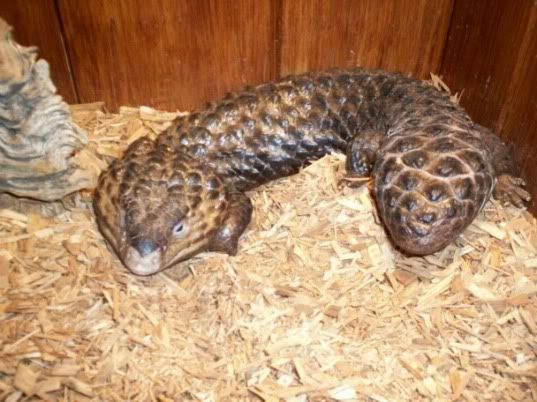"In nature, every advantage increases an animal’s chances of survival, and therefore its chances of reproducing. This simple fact has caused animal species to evolve a number of special adaptations that help them find food and keep them from becoming food. One of the most widespread and varied adaptations is natural camouflage, an animal’s ability to hide itself from predator and prey." Animals have adapted to blend in with their environment so that others might overlook them. A few sophisticated hiders can change their camouflage in accordance with a change in their surroundings. In addition to these expert hiders, some animals don’t hide at all, but throw predators off by disguising themselves as something dangerous or uninteresting." Here are a few examples of animals which play with perception in nature, where other animals perceive them as something different.
CAMOUFLAGE:
Dead Leaf Butterfly
Leopard
ANIMALS THAT SCARE/CONFUSE PREDATORS:
Shingleback Skink

"It is also called the stumpy tail, bobtail, pine-cone, bog-eye or sleepy lizard. It has a short but wide stumpy tail that resembles another head, and may confuse predators. The tail also contains fat reserves, which are drawn upon during hibernation in winter."
Butterflies

![[butterfly-2.jpg]](https://blogger.googleusercontent.com/img/b/R29vZ2xl/AVvXsEid5b7E6BYjpUwnrkCVU8D7MeoHER7PF-q9T_JdSRUNe1zc7jAapCV1-QRmY3W5ze_ly5n2gjL0JvyG0yBGsG6JXlRVeZEs1_t6GeCHs7WszuNG-cvPTYCevUFeZi54fhTHqHMvjflm5GaW/s1600/butterfly-2.jpg)
"Some butterflies have evolved 'eye' like markings on their wings, scaring off some birds. Also, since some birds attack the eyes of an animal first, the butterfly has a chance of escaping in the confusion when the bird simply pokes a hole in one of the wings."
ANIMAL THAT ADAPTS TO IT'S SURROUNDINGS:
Chameleon
![[threehornedchameleoncamoufl.jpg]](https://blogger.googleusercontent.com/img/b/R29vZ2xl/AVvXsEi0ERDD3jFC2IAgRLSyu-7ZiiM8Vbmy5IT-b6LpNG5SW4ZEt8XiKXisKz65-AKy5azgb5wOKxjj-48Z_DxQXjQ4Bwp3GdlGHearjVjCcV3AT_uWpjYAJfOjwM8bFZc8oRdCkN3BzRSsXMIY/s1600/threehornedchameleoncamoufl.jpg)

I may be able to use some of these techniques in my project for parts of the building that I may want to blend in with the natural elements on site (cliffs and vegetation) so that it fits in with the natural context. Also, as I do not want to detract from the site's surroundings, camouflage techniques will allow for the main focus to be on emphasising the beauty of the site. The chameleon is particularly interesting as it can change its appearance according to the varying conditions it finds itself in. This could be translated into the building function, building skin, form, technology, ventilation and shading etc so that these can adapt to the different conditions of the site (wind, sun, rain, time of day, amount of people in the site etc).


 Dragonfly
Dragonfly
![[animal-camouflage-1.jpg]](https://blogger.googleusercontent.com/img/b/R29vZ2xl/AVvXsEjx0FFVV1WUQglwLzizGIcTWmhAb87Ed5TGLZUVneGThffzuYknWXjipaXGKEszbmIUKcN5HctO3r8CY85McPgWZGrmXSVaKJiQ7W15smsGDnVgPzxLx5q_yXMG90mRZaMqfHOhkccawoyN/s1600/animal-camouflage-1.jpg)
![[owl-horizontal.jpg]](https://blogger.googleusercontent.com/img/b/R29vZ2xl/AVvXsEhJepS0mgcbFptO06I7sw8TVZw6REeMbmsa9JbSlzrY9ETTtTvo4xVgboz8G3_MI1fBNZX34nx7Qz_VCjaYbhHGh5IxzVjscVp5vli3GsT9E8Ubd4UKNlF4rs4Ju-f1YniMyJU3sLg_jzpJ/s1600/owl-horizontal.jpg)

![[stringraycamouflage-horizon.jpg]](https://blogger.googleusercontent.com/img/b/R29vZ2xl/AVvXsEh5WWc7bR7sawQRka3QMgnGq1RGYovJFfbC1M8IYDbo5xVvgHcNxSrgAqiBux4ue1LNx4UpKop6ieqzFoJ7a0NaT8UzNcz9srWVfoSHNylWjNppYPU4urRaPaxU5UuVSkfas8nZe8VBWOH5/s1600/stringraycamouflage-horizon.jpg)
No comments:
Post a Comment